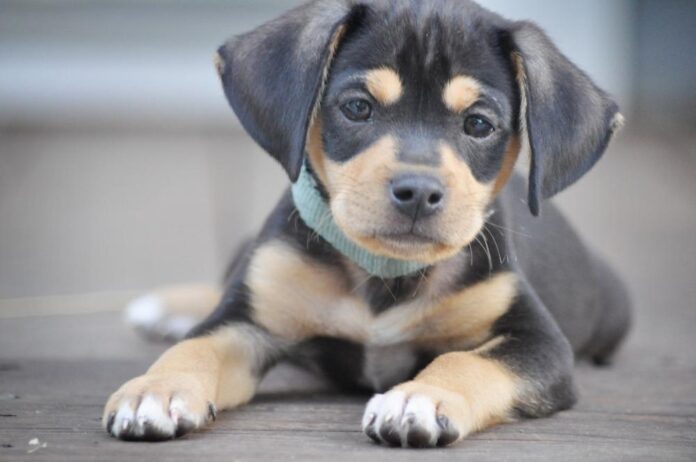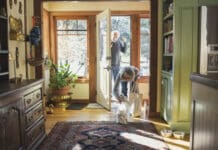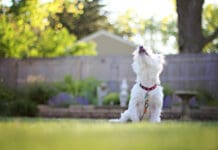Excerpted from Puppy Basics by Pat Miller, CPDT and Nancy Kerns
There’s lots of puppy stuff you’ll need to make your puppy comfortable, happy, and successful as he learns to adapt to your alien environment.
- Crate. A crate is an indispensable behavior management tool; it facilitates housetraining and prevents puppy misbehavior by keeping your dog safely confined when you’re not there to supervise. It allows you to sleep peacefully at night and enjoy dinner and a movie without worrying about what the pup is destroying. (Check out WDJ’s Ebook on Crate Training if you need extra help.)
- Puppy pen/exercise pen. This is another extremely useful management tool, but it expands the “den” concept of a crate to a slightly larger area, giving a pup more room to stretch her legs, yet still keeping her in a safe, confined area. Many people include a “restroom” facility, by using a tarp underneath the pen and newspapers on top of that at one end.
- Tether. This is a short (about four feet in length) plastic-coated cable with sturdy snaps at both ends. Tethers are intended to temporarily restrain a dog for relatively short periods of time in your presence, as an aid in a puppy supervision and house-training program, and as a time-out to settle unruly behavior. They should not be used as punishment, or to restrain a dog for long periods in your absence.
- Collar, ID tag, leash, and harness.
- Seat belt. Use a restraint that fastens to your car’s seat belts and your dog’s harness (never a collar) to keep her safe, and safely away from the driver.
- Clicker. Properly used as a reward marker, a clicker significantly enhances your communication with your furry friend and speeds the training process.
- Treats. A clicker, of course, is nothing without an accompanying reward. We use treats as the primary reward to pair with the clicker because most dogs can be motivated by food, and because they can quickly eat a small tidbit and get back to the training fun.
- Long line. A lightweight, strong, extra-long leash (10 to 50 feet), the long line is an ideal tool to help your dog learn to come reliably when called regardless of where you are or what other exciting things are happening.
- Kong toys. If we could buy only one toy for our dog, it would be a Kong, a chew-resistant (not chew-proof), rubber toy with a hollow center. A Kong can be used “plain” as a toy, but makes an irresistible treat for any dog when stuffed with kibble or treats that are held in place with something like peanut butter, cream cheese, or yogurt.
- Balls, interactive toys, fetch toys.
- Grooming tools. Choose combs and brushes appropriate for your dog’s type of coat (ask a groomer or vet), shampoo and conditioner, scissors, nail clippers, cotton balls, and toothbrushes. Start using these tools on your puppy early, pairing the experience with tasty treats so she forms a positive association with the task.
- House cleaning tools.
For more information on bringing home a new puppy, read the ebook Puppy Basics from Whole Dog Journal.






